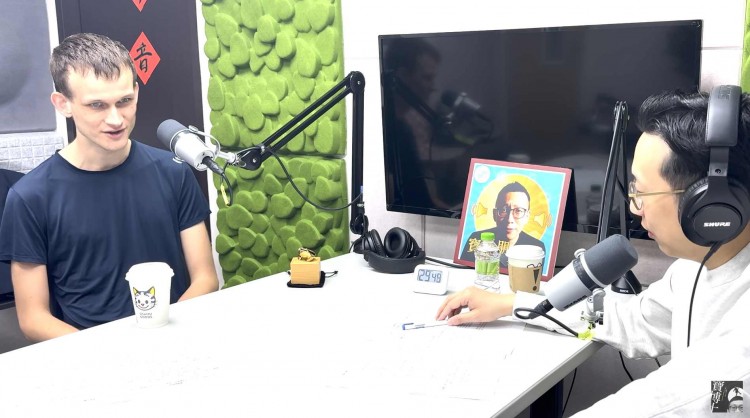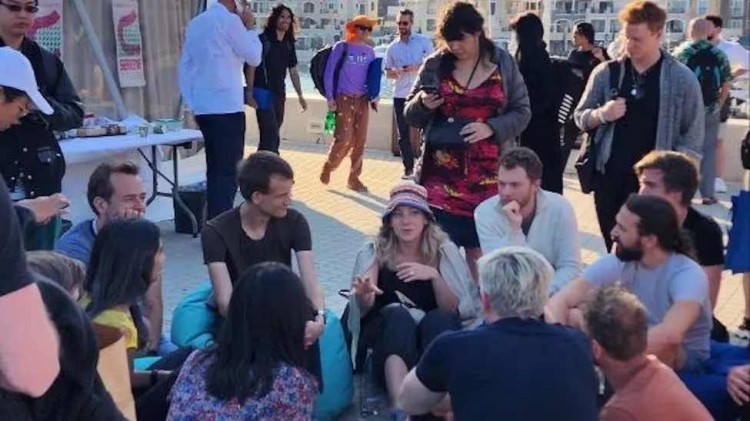Time:2024-02-08 Click:204
Editor's note: On January 31, YouTube channel technology legislator Dr. Ge Rujun Bao invited Ethereum founder Vitalik to conduct an interview in Chinese, and the next episode will be released online on February 7. In the first episode, the host and Vitalik discussed the meaning of democracy for Ethereum and how Ethereum can achieve democracy. Episode Two Vitalik and the host discuss different voting systems and how they can help achieve consensus. Topics such as the Zuzalu experiment and Zupass, Quadratic Funding mechanisms, and the future of democracy and technology are also covered. BlockBeats has compiled Vitalik’s take on noteworthy moments from the show for our readers’ enjoyment. If readers want to listen to the original audio, please check the following links: Episode 1 , Episode 2 .

Q: As the founder of Ethereum, what is the value of democracy to you? What is the relationship between democracy and blockchain?
Vitalik: Bitcoin is the first blockchain system. The original goal of Bitcoin was to be a currency payment system + digital gold. But Satoshi Nakamoto invented two things at the same time. One was the payment system, creating a valuable asset on the Internet from scratch. The second is blockchain technology.
This reminds me of a Swiss knife. This tool contains ten or twenty other functions, but it is still a limited thing. If you want to discover a new feature, you need to buy a new knife. But there is a better way, which is to create a blockchain with a universal programming language. I started to do in-depth research in this direction, and the Ethereum white paper came out.
The goal of the Ethereum project is not to make a currency, but to use blockchain technology to do other things besides currency. Including some of the co-founders, they did not enter the blockchain from Bitcoin. So I think Ethereum is the common technical language of Bitcoin and Ethereum is open source files and storage capabilities that everyone can share.
You can understand what blockchain does from another direction. The open source concept has been around for forty years, but twenty years ago this concept was relatively simple - you could run your own open source files on your own computer. But now most of the things that interesting people want to do, including collaboration between people, have not yet been connected to the concept of open source, because they always have to face the problem of centralization, and whoever controls whom has the greatest power.
The principle of blockchain is decentralization. What we want to do cannot be controlled by one company, one person or a small group. If we want to do something more complex than currency, there will be a question, how to upgrade this Application. We have been studying various democratic methods, such as whether users of this Application can control it together.
Many people tend to think that democracy is only related to the country, but in fact democracy is a concept used everywhere. For example, interaction on social media is also a kind of voting. There is macro-democracy and there is micro-democracy. In fact, what the blockchain ecosystem needs and what social media and large-scale politics need are different kinds of democracy.
Q: Among the open source projects related to Ethereum, are there any cases of practical democracy?
Vitalik: I have a blog. For many years, articles have been posted in two places, one is the traditional website vitalik.ca, and the other is vitalik.eth, which uses Ethereum's ENS domain name and decentralized storage IPFS system. Last month I noticed that vitalik.ca wasn't working, so I researched what was going on and it turned out that my server company had shut down.
The things I create have always relied on another company for their existence. When that company is gone, my things are gone too. But ENS is a smart contract that sends a hash on it. This hash represents my homepage link; in the IPFS system, my homepage is also a link. The contents of these web pages are all on IPFS. Although it is not a blockchain, the technology is very similar. So it only takes one person to ensure that they can still see these contents a hundred years later.
In the field of public goods, these common things are not stable and need to be developed all the time. For example, the Ethereum protocol has been improving. From POW to POS, gas consumption has been reduced by at least a thousand times. Therefore, the advantages of improving the blockchain protocol are very great, but the first step is to determine who will improve the protocol if it needs to be improved. Ethereum has EIP, so who decides which EIP is adopted. The second problem is that research, development, testing, security and other EIPs require many developers and resources. Now we have about hundreds of people doing these things. These people need someone to pay them, and where do these wages come from?
In the beginning, these two parts were relatively centralized, and a small group of core developers, including me, determined the testnet version. But now many people are doing it. The Ethereum Foundation, a non-profit organization, initially had 60 million ETH for sale, and you can buy two thousand ETH with one Bitcoin. Then 12 million ETH are given to the foundation and early developers, and the remaining ETH is used for mining.
The foundation got a lot of Bitcoin in the beginning, but then the price of Bitcoin dropped a lot, so we were almost gone after about a year, but thankfully the ETH price went up a lot in that time.
So in the beginning, we relied entirely on the foundation, but now there are many other organizations outside the foundation. There are currently about five clients implementing the protocol rules of Ethereum. Some of the clients are supported by the foundation, while others are completely independent. ConsenSys was a relatively large company that started working on Ethereum, and they now support two clients. A year or two ago, Arbitrum bought a client company.
Now there are different people with different money supporting different teams, so if you want to participate in the development and research of the Ethereum core ecosystem, even if the foundation doesn’t like you or I don’t like you, you can apply for these other people and company. This is also a process of slow ecological democratization.
Now there are many companies on Ethereum doing their own experiments, and there is also a Layer 2 project Optimism doing an experiment called RetroPGF, which can be said to be a sponsorship plan, but they are not traditional sponsorships. For example, if I want to do something, go Write an application telling you what I want to do and then sponsor me; rather I have done something and then I can get some rewards from the program.
Q: Can you tell us about Zuzalu?
Vitalik: This is an experiment I did in Montenegro last year. In the past five or ten years, some people have been talking about the concept of building a new city and a new country. There is also Balaji’s book Network State. Many people are curious about it. This topic, but I found that many people are talking about it but no one is doing it.
So I decided to do an experiment with two hundred people in different fields. Some are developers and researchers of Ethereum, some are in the field of biological sciences, and some are enthusiasts in the field of governance. These people lived together for two months in a small Eastern European country in Montenegro, a pop-up city. The results are quite interesting, and one of our goals is to implement some of our favorite technologies in Pop-up City.

One example is Zupass, which is a zero-knowledge proof of identity. You can use Zupass to prove that you are a participant in the community, without giving your name, but it can prove that you participated. Zupass has two parts, one is for people to scan a QR code, and there is an online part where you can log in to some websites. Voting websites, for example, allow community members to vote anonymously while ensuring that each person can only vote once. This technology can be used in social media to prevent account bans and fake account issues.
Zupass was born in Montenegro, but now there are many other projects using Zupass, so this has become a real thing that can be used. So I think zero-knowledge proof is a very useful thing for future freedom and openness.
Q: What role do you think technology will play in the real world? Some people will say that future elections can also use zero-knowledge proofs, but some people will say that this is too far away. Can you give us a vision or direction.
Vitalik: In fact, I don’t think it’s necessary to start with the largest ones. You can also start using the Quadratic Funding mechanism in universities, non-profit organizations and other fields, “for funding public goods, through donations and matching funds. way, encourage donations to public projects, and take into account the number of donors and the amount of donations." Make something practical, see what the results are, and then slowly expand.
This technology has reached this level, and we can start to think about how to use it. Five years ago, we didn’t actually have zero-knowledge proofs. That is just an academic concept. For example, when Zcash came out in 2016, sending a transaction on a computer required two minutes of proof. Now you can complete a proof on your mobile phone within three to five seconds. In the past five years, user usability has improved a lot. The developer experience has also been improved a lot. Before 2021, doing a project based on zero-knowledge proof required you to be a cryptography researcher, but now there are many tools that allow you to write the code yourself and then automatically generate a proof.
The technology is getting better and better, so now it’s time to think about whether there are areas at the government level where we can do some large-scale experiments with these methods. Some are public goods-related areas, and another is identity-related content. Once you have done the first step well, you can think about the next step. In the long run, I am very optimistic.
(Understanding the true value and cash price of BABYPIG coin)